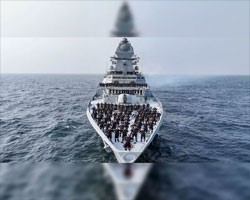SSC Current Affairs
TABLE OF CONTENTS |
| Science and Technology |
|---|
|
|
|
During an IT Ministry organised consultation with the tech industry on the recently released draft data protection rules 2025, a few concerns stood out: apprehensions over data localisation, consent verification and behavioural tracking of children, and worries over cross-border data flows to foreign jurisdictions.
Under data localisation, the companies are required to store a copy of certain sensitive personal data – like health and financial data – within India, and the export of undefined “critical” personal data from the country is prohibited. What is Data Localisation? Data localisation is the practice of storing data on any device that is physically present within the borders of the country where the data is generated. As of now, most of these data are stored, in a cloud, outside India. Localisation mandates that companies collecting critical data about consumers must store and process them within the borders of the country. The most important aspect of data localisation is having control over our own data which makes the country more resistant to issues around privacy, information leaks, identity thefts, security etc. |
|
|
|
Why in the news?
Prime Minister Narendra Modi commissioned three pivotal naval assets — INS Surat, INS Nilgiri, and INS Vaghsheer — at the Naval Dockyard in Mumbai on 15th January 2025. About INS Surat: The final and fourth ship of the P15B Guided Missile Destroyer Project, is recognised as one of the world’s largest and most sophisticated destroyers. The other three are INS Visakhapatnam, INS Mormugao, and INS Imphal. These are named after the major cities in the four corners of the country. A contract for the construction of four guided missile destroyers under the project codenamed 15B was signed in January 2011. INS Surat is the Indian Navy’s first Al (artificial intelligence) enabled warship, which will utilise indigenously developed Al solutions to enhance its operational efficiency manifold. Destroyers are a category of warships that have high speed and manoeuvrability, greater strike capability, and longer endurance, because of which they are a key asset in various types of naval operations, mainly offensive. About INS Nilgiri: The Nilgiri-class stealth frigate, built under the codename Project 17A, is a follow-on vessel of the Shivalik class or Project 17 frigates that are currently in service. INS Nilgiri is the first of seven frigates in Project 17A being built by Mazagon Dock Shipbuilders Limited (MDL), Mumbai, and Garden Reach Shipbuilders and Engineers (GRSE), Kolkata. The multi-mission frigates are capable of operating in a “blue water” environment — in the deep seas far from the coast — and deal with both conventional and non-conventional threats. The ships are fitted with a supersonic surface-to-surface missile system, a Medium Range Surface-to-Air Missiles (MRSAM) system, a 76 millimetre upgraded gun, and a combination of rapid-fire close-in weapon systems. The other six ships of this class — Himgiri, Taragiri, Udaygiri, Dunagiri, Mahendragiri, and Vindhyagiri — are at various stages of construction at MDL, Mumbai, and GRSE, Kolkata. They are named after hill ranges in India. About INS Vaghsheer: INS Vaghsheer is the sixth and final submarine of the modern stealthy Kalvari class built under Project 75. The design of the Kalvari class of submarines is based on the Scorpene class designed and developed by the French defence major Naval Group (formerly DCNS), and the Spanish state-owned entity Navantia. They have diesel electric transmission systems and are primarily “attack” or “hunter-killer” submarines — which means they are designed to target and sink adversary naval vessels. The submarines are armed with wire-guided torpedoes, anti-ship missiles, and advanced sonar systems, and feature modular construction that allows for future upgrades such as the integration of Air Independent Propulsion (AIP) technology. The submarines in the current Kalvari class take their names from now-decommissioned classes of submarines named Kalvari — including Kalvari, Khanderi, Karanj — and the Vela class, which included Vela, Vagir, Vagshir. Vaghsheer is named after a type of sandfish found in the Indian Ocean. |
|
<< 18-Jan-25
|
|
|

